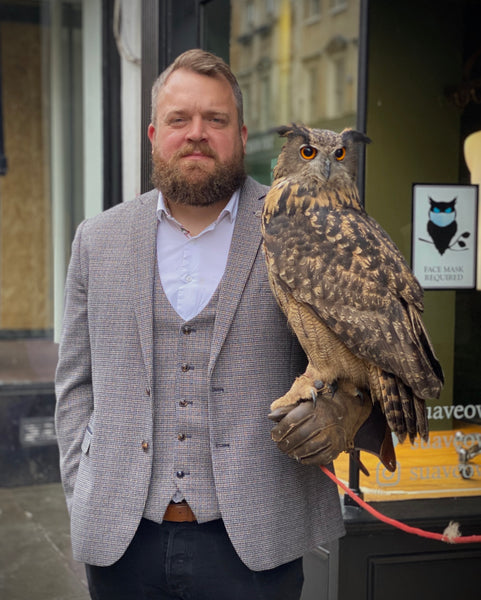
The Great Horned Owl
What Is There To Know About The Great Horned Owl?
The 4th of August annually marks Owl Awareness Day. It is a day to share knowledge about owls and their conservation needs, spreading information about these fantastic birds. At SUAVE OWL, we think this day deserves to be celebrated! Read on for some fun facts about The Great Horned Owl, a mighty bird of prey and the very owl shown in our logo...

What Does A Great Horned Owl Look Like?
Great Horned Owls are recognisable from the feather tufts on top of their heads called plumicorns. Their horn-like appearance gives them their iconic name. The purpose of these 'horns' is highly debated. Ideas range from use for communication, hearing, and protection. However, we do not completely know what their purpose is.

Where Do You Find Great Horned Owls?
They are one of the most common North American owls, found in a range of habitats. They are so vastly found that their colouring changes from region to region, related to the humidity of the area. Great Horned owls found in the Pacific Northwest and the Atlantic side of Canada are darker in tone. Much lighter owls are found in the Southwestern deserts or subarctic prairies.
How Do Great Horned Owls Hunt?
Great Horned Owls are nocturnal and have adapted to hunt at night. They have soft feathers that assist in quiet movement. Their large eyes are primed for night vision, opening widely with many rod cells for excellent night vision. They have sensitive hearing with facial feathers that direct sound to their ears. When clenched, their talons require 28 pounds of force to open, enough to severe their prey’s spine after a quick and silent attack.
They are one of the largest owls. The average wingspan of a Great Horned Owl comes in at an impressive 4.6 feet, and they averagely only weigh 3 pounds.
Are Great Horned Owls Endangered?
The Great Horned Owl is not an endangered species. However, many owl populations are dramatically reducing in numbers. This is due to adverse habitat changes, hunting, and human interference. With some owl species already extinct and so many endangered, action is needed before it is too late for these magnificent creatures.
If you want to support owls, read 'How To Help Wildlife' by The Owls Trust, visit a sanctuary, donate to a preservation trust, or adopt an owl. Make a difference and spread awareness today!

